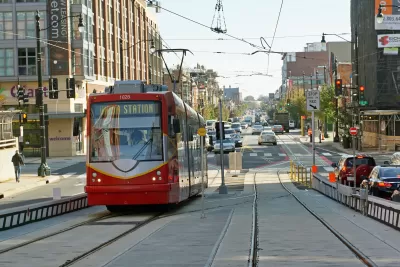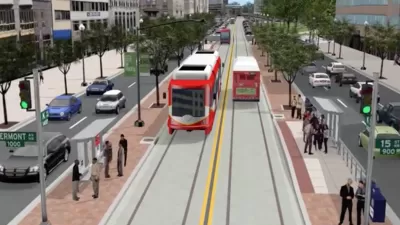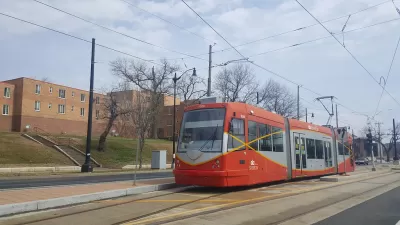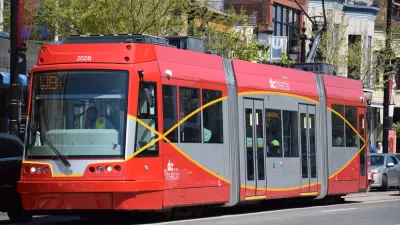Washington D.C.'s new streetcar line opened to a chorus of media naysayers who mocked the slow moving transit, but reality shows it's not quite as slow as some would have you believe.

It's not breaking any land speed records, but that was never the point. In a post on Greater Greater Washington, Ben Bowman writes that the media pile-on during the opening of the new D.C. streetcar line mischaracterized the speed and purpose of the new transit line. Bowman points to an article in the Washington Post that claimed that one could walk faster than the streetcar could travel, end-to-end along its route. This in fact may have been true during the opening, however speeds have appeared to pick up as regular service has begun.
As for the streetcar's speed, more recent articles say it's taking an average of 18-20 minutes to get from end to end. In fact, in the inaugural "Running of the Streetcar", many runners couldn't outpace the Streetcar, even when starting with a small lead...
The fact of the matter is that people have underestimated how much time it would take to walk the streetcar route, and overstated how much time it takes the streetcar itself to travel it. Really, taking the DC Streetcar is about twice as fast as walking.
Bowman writes that it's important to set the record straight, particularly as plans to expand the streetcar system will rely on public support.
FULL STORY: Taking the streetcar is, in fact, way faster than walking

Trump Administration Could Effectively End Housing Voucher Program
Federal officials are eyeing major cuts to the Section 8 program that helps millions of low-income households pay rent.

Planetizen Federal Action Tracker
A weekly monitor of how Trump’s orders and actions are impacting planners and planning in America.

Ken Jennings Launches Transit Web Series
The Jeopardy champ wants you to ride public transit.

California Invests Additional $5M in Electric School Buses
The state wants to electrify all of its school bus fleets by 2035.

Austin Launches $2M Homelessness Prevention Fund
A new grant program from the city’s Homeless Strategy Office will fund rental assistance and supportive services.

Alabama School Forestry Initiative Brings Trees to Schoolyards
Trees can improve physical and mental health for students and commnity members.
Urban Design for Planners 1: Software Tools
This six-course series explores essential urban design concepts using open source software and equips planners with the tools they need to participate fully in the urban design process.
Planning for Universal Design
Learn the tools for implementing Universal Design in planning regulations.
Ada County Highway District
Clanton & Associates, Inc.
Jessamine County Fiscal Court
Institute for Housing and Urban Development Studies (IHS)
City of Grandview
Harvard GSD Executive Education
Toledo-Lucas County Plan Commissions
Salt Lake City
NYU Wagner Graduate School of Public Service





























